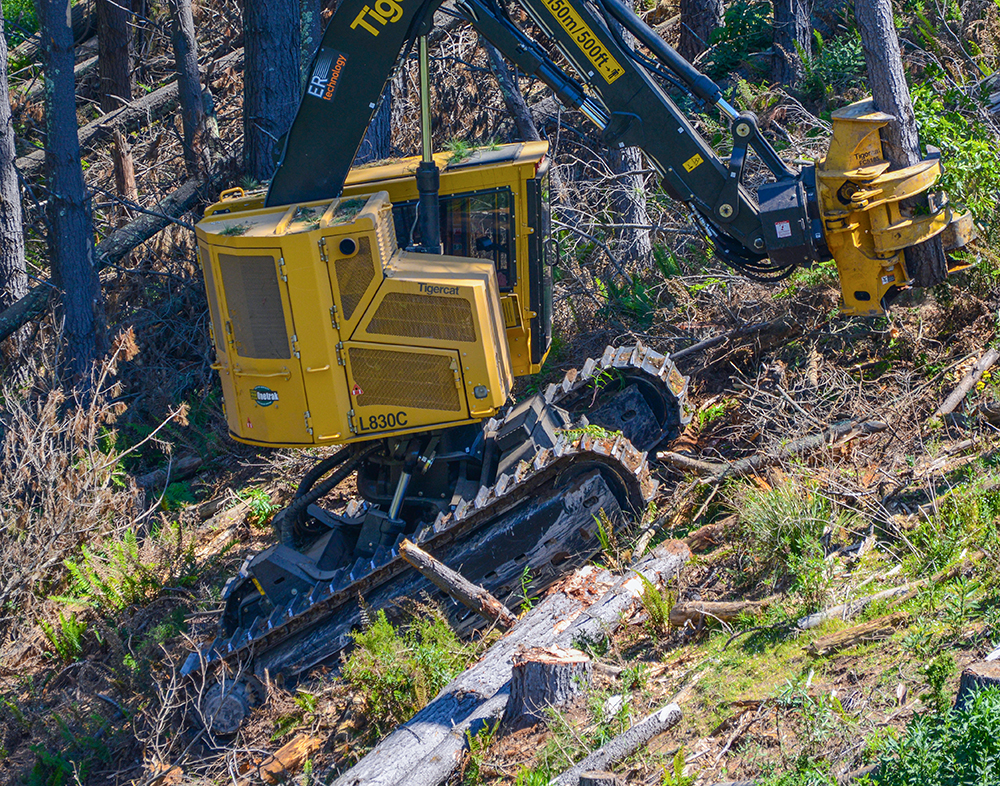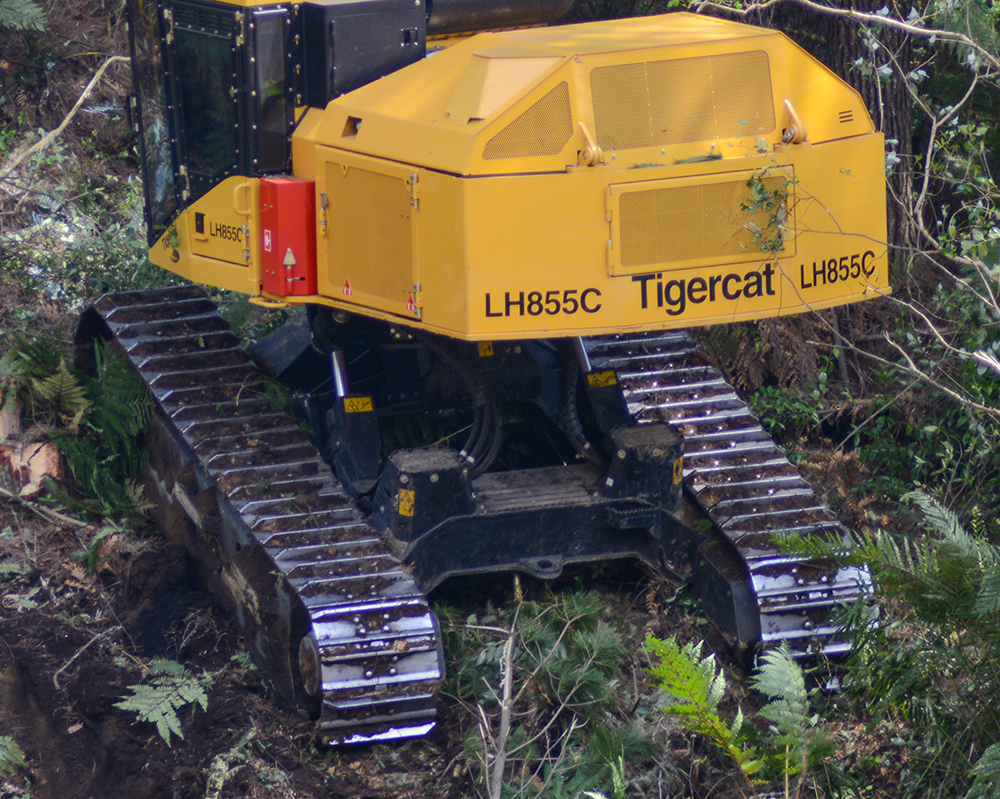Track replacement is one of the largest operating expenses for any tracked machine.
Forestry and off-road industrial applications in particular present very different challenges for tracked machines than those faced by construction excavators. Steep slopes, uneven terrain, tree stumps, rock, sand and mud can all lead to premature track wear or failure in a potentially remote and inconvenient location.

Always travel straight up and down the hill and avoid side slopes wherever possible.
Special Tigercat forestry grade components available through authorized Tigercat dealers include:
In addition to always using the right spare parts, there are a number of common sense maintenance and operation tips that will help to reduce costs and potential downtime. First and foremost – always carefully review the undercarriage section of the Operator’s Manual. The Operator’s Manual contains the required details on maintenance procedures, schedules and settings specific to the machine model you are working with.
Chain tension (or sag) should be adjusted to suit your operating conditions. In general, set the chain tension just tight enough to prevent the sprocket from jumping. This means a machine operating in steep terrain and/or muddy conditions may need the chain tighter than a machine operating in dry, flat ground. A track that is too tight will wear out significantly faster due to increased tension in the chain. The chain tension is directly related to pin bearing loads and contact stress at the sprocket. A 50% increase in the life of the track assembly can be realized by maintaining the correct amount of track sag. Again, use your Tigercat Operator’s Manual as a guide for chain sag specifications that will work for most field conditions.
TIGERCAT DESIGNS AN EXCEPTIONALLY TOUGH, FORESTRY-GRADE TRACK SYSTEM THAT LEADS THE INDUSTRY IN RELIABILITY.
PROPER CARE AND MAINTENANCE WILL KEEP IT LASTING FOR YEARS
Before starting work each day, always inspect for loose bolts, leaky seals and abnormal wear patterns. A loose track shoe bolt will very quickly lead to a shoe or link failure. In the event a shoe is removed or replaced, re-torque the bolts at 100 hours after installation to ensure the shoe remains tight.
Avoid continuous traveling of more than 1 Km (1/2 mile) particularly if the machine has less than 200 hours on new undercarriage roller components. Stop periodically to check temperatures of track rollers. No point on the rollers should exceed 80° C (180° F) when measured with a heat gun. Allow for roller cool down periods of 15-30 minutes per mile (1.5Km) depending on ambient conditions.
A leaking roller or idler seal will quickly result in a bearing failure. A failed roller will put additional stress on the remaining components and reduce undercarriage life. Abnormal wear patterns are an indication of incorrect chain tension or failed components. Keep a supply of Tigercat-Berco track hardware, shoes, spare rollers and undercarriage service tools on hand.

Drives at the back to get the most pin and bushing life.
When you order your machine, make sure tracks are configured to match the requirements of your region and average conditions. To minimize undercarriage wear and stress on track machines, select the narrowest track shoe that will meet your flotation requirements.
Avoid counter-rotating the track whenever possible. Counter-rotation accelerates wear on the tracks and other undercarriage components. Instead, turn the machine gradually while slowly moving in forward or reverse. Gradual turns minimize ground disturbance and excessive undercarriage wear.
Track machines should be driven with the idlers forward. When the machine is driven in reverse, the top half of the chain is subjected to the full tractive pull. This tension effectively doubles the pin and bushing load cycle within the chain and will result in shorter pin and bushing life.
When harvesting on slopes, work up or down a slope whenever possible. Working across a slope creates stress in the tracks that shorten undercarriage component life. Try to structure the job with minimal cross-slope activity.
Stumps and other obstacles cause excessive concentrated loads on the undercarriage components. The chain is also subjected to twisting loads that will cause internal pin damage. Avoid driving over these immovable obstacles when possible. Ground conditions are uncontrollable and every job site has a unique combination of slopes, rocks, mud and debris. However, the more you work in difficult terrain that requires high torque and high horsepower, the faster your undercarriage will wear.